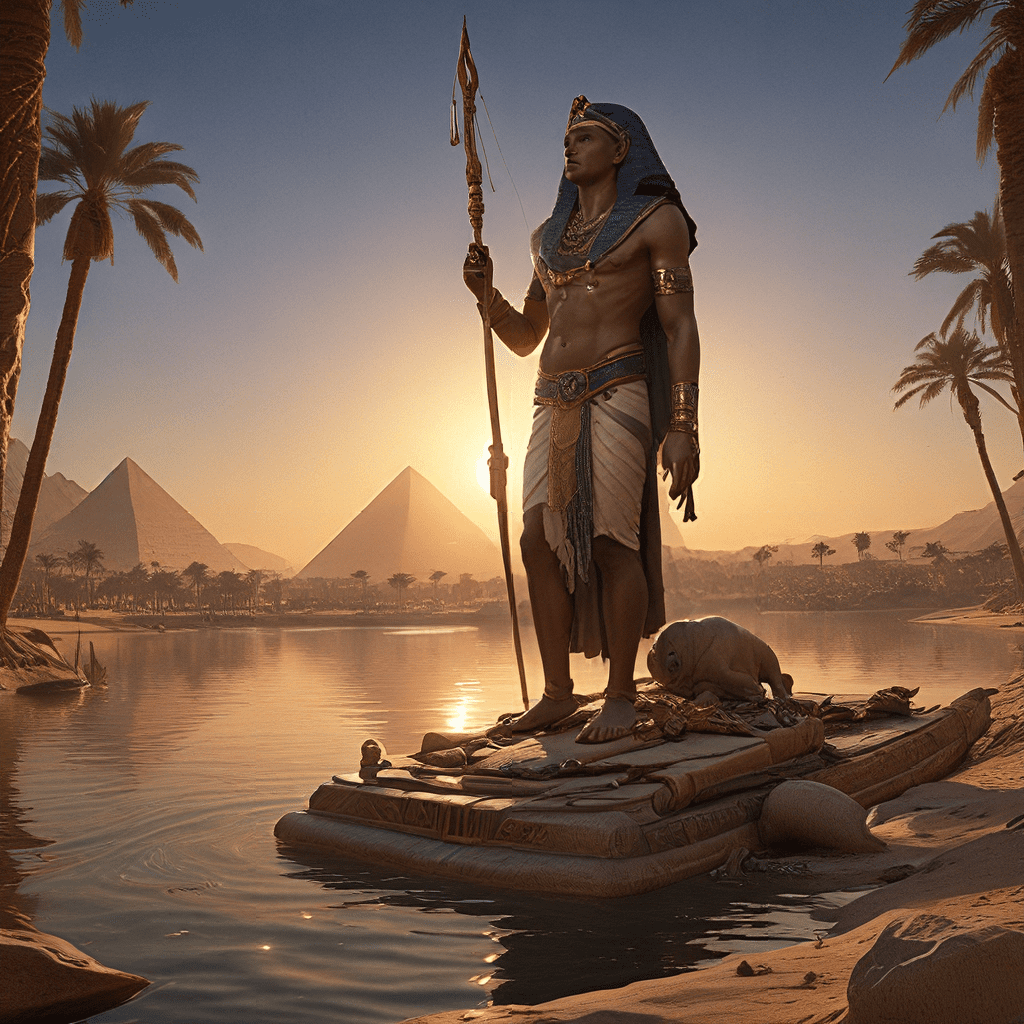The Shapeshifters of the Nile: Exploring the Myths of the Weres
In the realm of ancient Egyptian mythology, the concept of shape-shifting, known as “weres,” played a significant role. These creatures, capable of transforming into various forms, often embodied the duality of nature, encompassing both benevolent and menacing aspects. From powerful gods to cunning tricksters, weres permeated Egyptian beliefs, influencing their art, literature, and daily life.
The Weres of the Nile: From Animals to Gods
Egyptian mythology is rich with weres, each possessing unique abilities and symbolism. Among the most prominent are the jackal, crocodile, serpent, and lion forms. These animals were not just feared or revered but also deeply intertwined with the gods themselves. Each animal form represented distinct qualities and often served as a powerful symbol for deities. The jackal, for instance, symbolized cunning and stealth, while the crocodile embodied strength and power. The serpent was associated with wisdom and magic, while the lion embodied fierce protection and justice.
Set, the Jackal-Headed God of Chaos
Set, the jackal-headed god, stands out as one of the most famous and controversial weres in Egyptian mythology. He is often depicted as a fierce and cunning deity, associated with the desert, storms, and chaos. Set’s role is often portrayed as a force of disruption, challenging the established order and symbolizing the unpredictable nature of the world. His most famous conflict is with his brother Osiris, the god of the underworld. Set’s actions, including the murder of Osiris, led to a cycle of vengeance and turmoil, ultimately shaping the cosmology and mythology of ancient Egypt.
The Crocodile-God Sobek: Protector and Terror
Sobek, the crocodile-god, embodies the duality of the Nile, representing both its life-giving qualities and its inherent dangers. He is revered as a protector, safeguarding the river and its people from harm. Sobek is associated with fertility, strength, and power, often depicted with a crocodile head, tail, and scales. However, he also embodies the fearsome nature of the Nile, reminding people of the dangers lurking beneath its surface. The crocodile’s predatory instincts and territorial nature were attributed to Sobek, emphasizing the unpredictable and powerful forces of nature.
The Serpent Goddesses: From Guardian to Trickster
Serpents held a significant place in Egyptian mythology, often associated with wisdom, magic, and fertility. Among the most prominent serpent goddesses are Wadjet, Renenutet, and Mehen. Wadjet, the cobra goddess, symbolized protection and royal power, often depicted as a uraeus, a cobra with a raised hood, adorning the pharaoh’s brow. Renenutet, the serpent goddess of harvest, represented nourishment and abundance. Mehen, the serpent guarding the underworld, symbolized protection and the cyclical nature of life and death.
The Lion Goddesses: Strength and Justice
Lion goddesses, like Sekhmet and Bastet, played pivotal roles in Egyptian mythology. They embodied strength, justice, and fierce protection. Sekhmet, the fierce lion goddess, was associated with war, vengeance, and the power of the sun. Her wrathful nature was often feared, and she was believed to be capable of inflicting plagues and death. Bastet, the gentle lion goddess, represented femininity, motherhood, and domesticity. She was known for her nurturing nature and was often depicted as a woman with a lion’s head or as a cat. Both lion goddesses showcased the duality of power and grace, protection and vengeance, shaping the complex dynamics of the Egyptian pantheon.
Weres in Egyptian Literature and Art
Weres were a constant presence in Egyptian literature and art, influencing the narratives and imagery of the ancient world. From the depiction of Set as a fierce jackal-headed god to the protective serpents adorning the pharaohs, weres served as powerful symbols of the divine and the natural world. Their presence in tombs, temples, and other artistic expressions reflects the profound impact they had on the culture and belief system of ancient Egypt.




